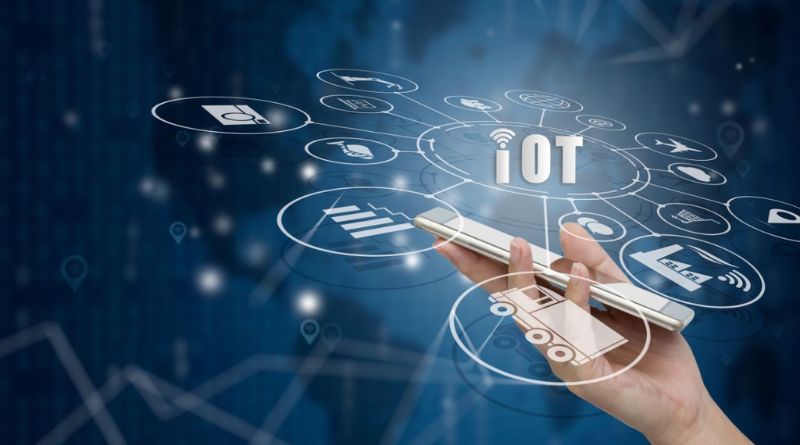The Internet of Things (IoT) is at the forefront of transforming our living spaces into smart homes. By connecting everyday devices to the internet, IoT enables seamless communication between gadgets, making our homes more efficient, secure, and comfortable. The smart home revolution is no longer a distant future but a present reality, driven by advancements in technology and an increasing demand for convenience.
Table of Contents
What is IoT in the Context of Smart Homes?
The Internet of Things refers to the network of physical devices that communicate with each other over the internet. In a smart home, this can include everything from thermostats and lights to security systems and kitchen appliances. These devices collect and share data, allowing homeowners to control and monitor their homes remotely via smartphones, tablets, or voice assistants.
Key Components of a Smart Home
- Smart Lighting: IoT-enabled lighting systems allow you to control the lights in your home with a tap on your smartphone or a voice command. You can set schedules, adjust brightness, or change colors to suit your mood or activity.
- Smart Thermostats: These devices learn your temperature preferences and adjust heating and cooling systems accordingly, optimizing energy consumption and reducing utility bills. They can be controlled remotely, ensuring your home is at the perfect temperature when you arrive.
- Smart Security Systems: IoT has revolutionized home security with smart locks, cameras, and alarm systems that provide real-time alerts and allow you to monitor your property from anywhere. Some systems even recognize faces and can differentiate between family members and intruders.
- Smart Appliances: From refrigerators that suggest recipes based on the ingredients inside to washing machines that can be started remotely, smart appliances are making daily chores easier and more efficient.
- Voice Assistants: Devices like Amazon Alexa, Google Assistant, and Apple Siri act as the central hub of smart homes, allowing you to control multiple IoT devices with simple voice commands.
The Benefits of IoT in Smart Homes
- Convenience: IoT devices automate routine tasks, making daily life more convenient. Imagine waking up to a freshly brewed coffee, lights turning on gradually, and your favorite music playing, all without lifting a finger.
- Energy Efficiency: Smart homes can significantly reduce energy consumption. Smart thermostats, lights, and appliances are designed to optimize energy use, contributing to lower electricity bills and a smaller carbon footprint.
- Enhanced Security: IoT-enabled security systems provide peace of mind by allowing homeowners to monitor their property remotely. Real-time alerts, video feeds, and smart locks ensure your home is secure even when you’re not there.
- Customization: IoT allows homeowners to tailor their environment to their preferences. Whether it’s setting the perfect lighting for a movie night or adjusting the thermostat for a cozy evening, smart homes offer a high degree of customization.
- Health and Wellness: Smart homes can contribute to a healthier lifestyle. For instance, smart beds track your sleep patterns and suggest improvements, while air purifiers monitor air quality and adjust settings to ensure a healthy living environment.
Challenges and Considerations
While the benefits of IoT in smart homes are numerous, there are also challenges to consider:
- Privacy and Security: With more devices connected to the internet, the risk of cyberattacks increases. It’s essential to invest in secure IoT devices and regularly update software to protect your data.
- Interoperability: Not all IoT devices are compatible with each other. It’s important to choose devices that work well together and with your preferred smart home ecosystem.
- Cost: The initial investment in smart home technology can be high. However, the long-term savings on energy bills and the added convenience often outweigh the upfront costs.
- Complexity: Setting up and managing a smart home can be complex, especially for those who are not tech-savvy. However, as technology advances, smart home systems are becoming more user-friendly.
The Future of Smart Homes
The future of smart homes looks promising, with continued advancements in IoT technology. We can expect even greater integration of devices, enhanced AI capabilities, and more personalized smart home experiences. As 5G technology becomes more widespread, the speed and reliability of IoT devices will improve, making smart homes even more efficient and responsive.
Conclusion
The Internet of Things is revolutionizing the way we live by transforming ordinary houses into smart homes. With the ability to control, monitor, and optimize various aspects of our homes remotely, IoT offers unparalleled convenience, security, and energy efficiency. While there are challenges to overcome, the benefits of smart home technology are undeniable, and its future looks brighter than ever.
FAQs
Q: What is a smart home?
A: A smart home is a residence equipped with IoT devices that enable remote control and automation of various home systems, such as lighting, security, and appliances.
Q: How does IoT improve home security?
A: IoT improves home security by allowing homeowners to monitor their property remotely, receive real-time alerts, and control devices like smart locks and cameras from anywhere.
Q: Are smart homes energy-efficient?
A: Yes, smart homes are designed to optimize energy consumption through smart thermostats, lighting, and appliances, leading to lower electricity bills and reduced environmental impact.
Q: What are the challenges of setting up a smart home?
A: The main challenges include ensuring device compatibility (interoperability), protecting privacy and security, managing initial costs, and navigating the complexity of installation and operation.
Q: What does the future hold for smart homes?
A: The future of smart homes will likely involve greater integration of devices, more advanced AI capabilities, enhanced personalization, and improvements in speed and reliability with the advent of 5G technology.



